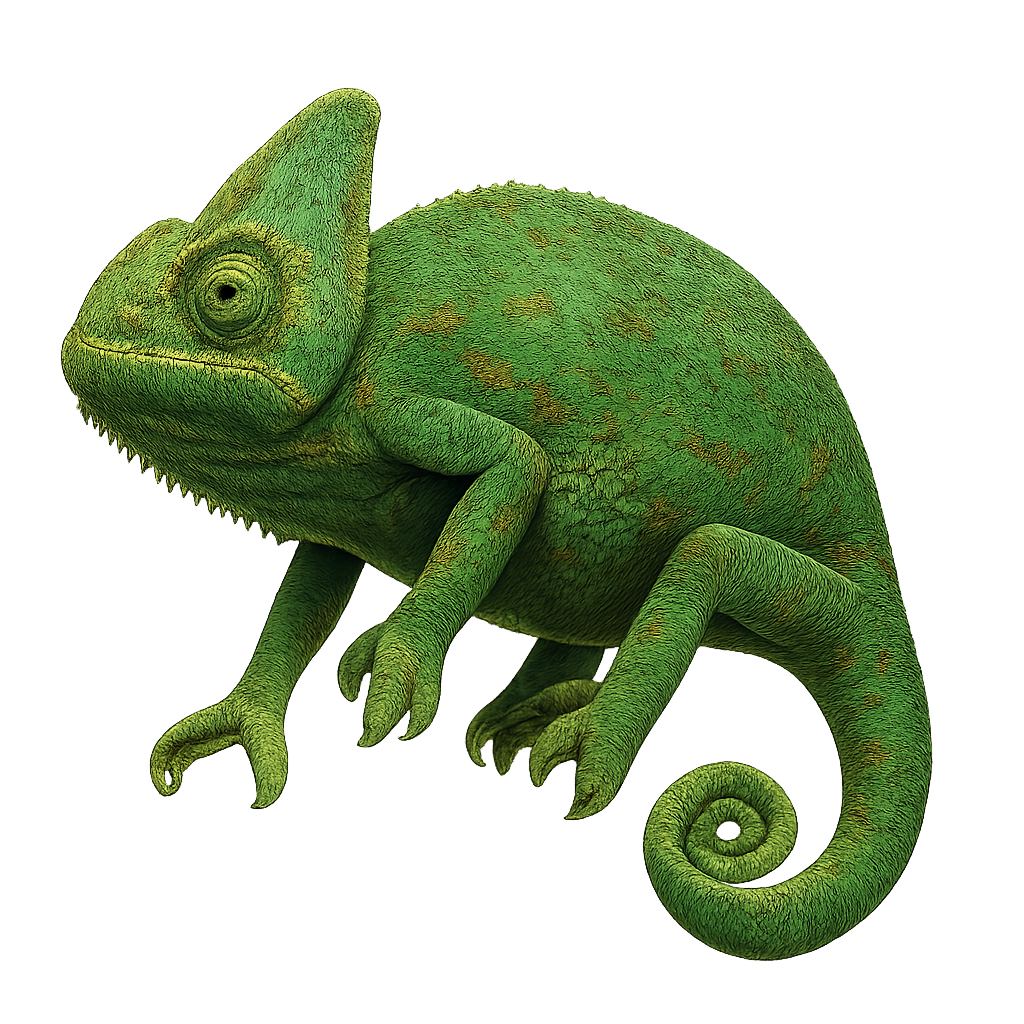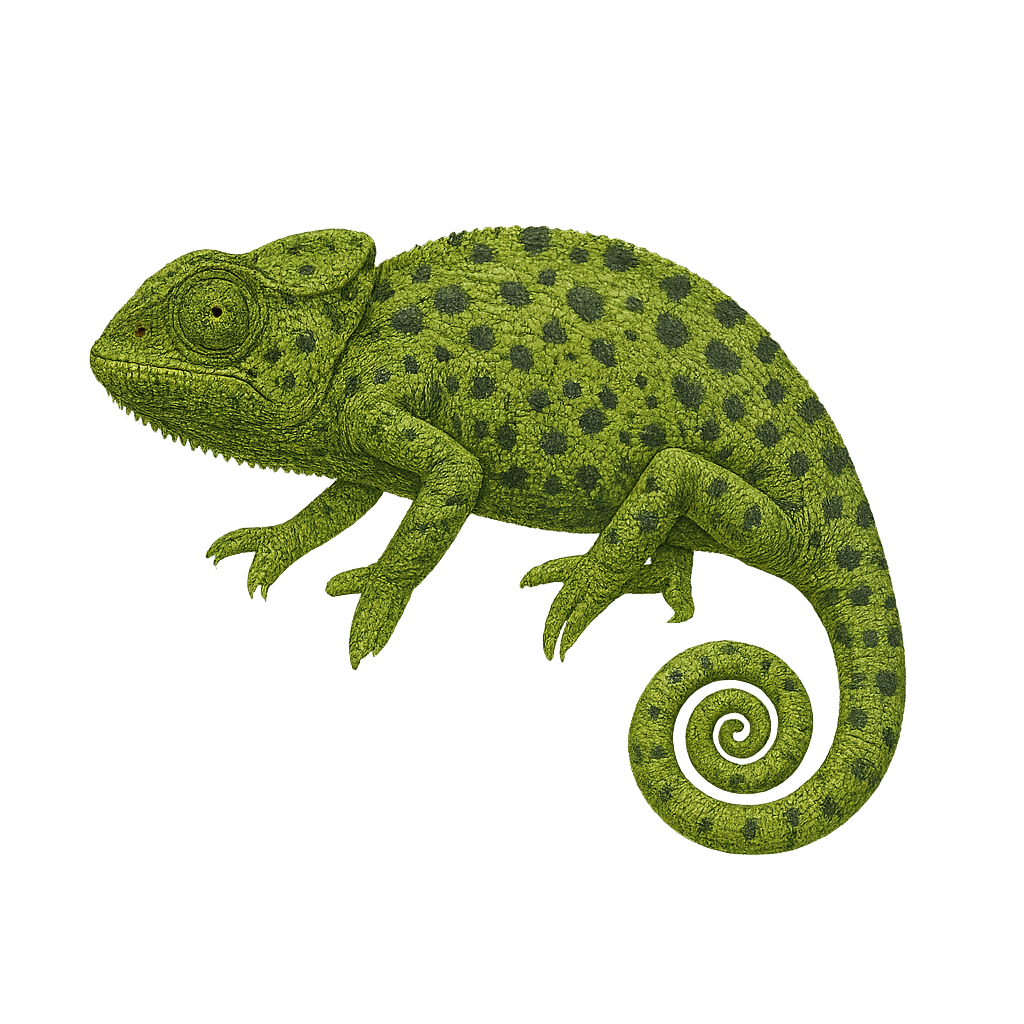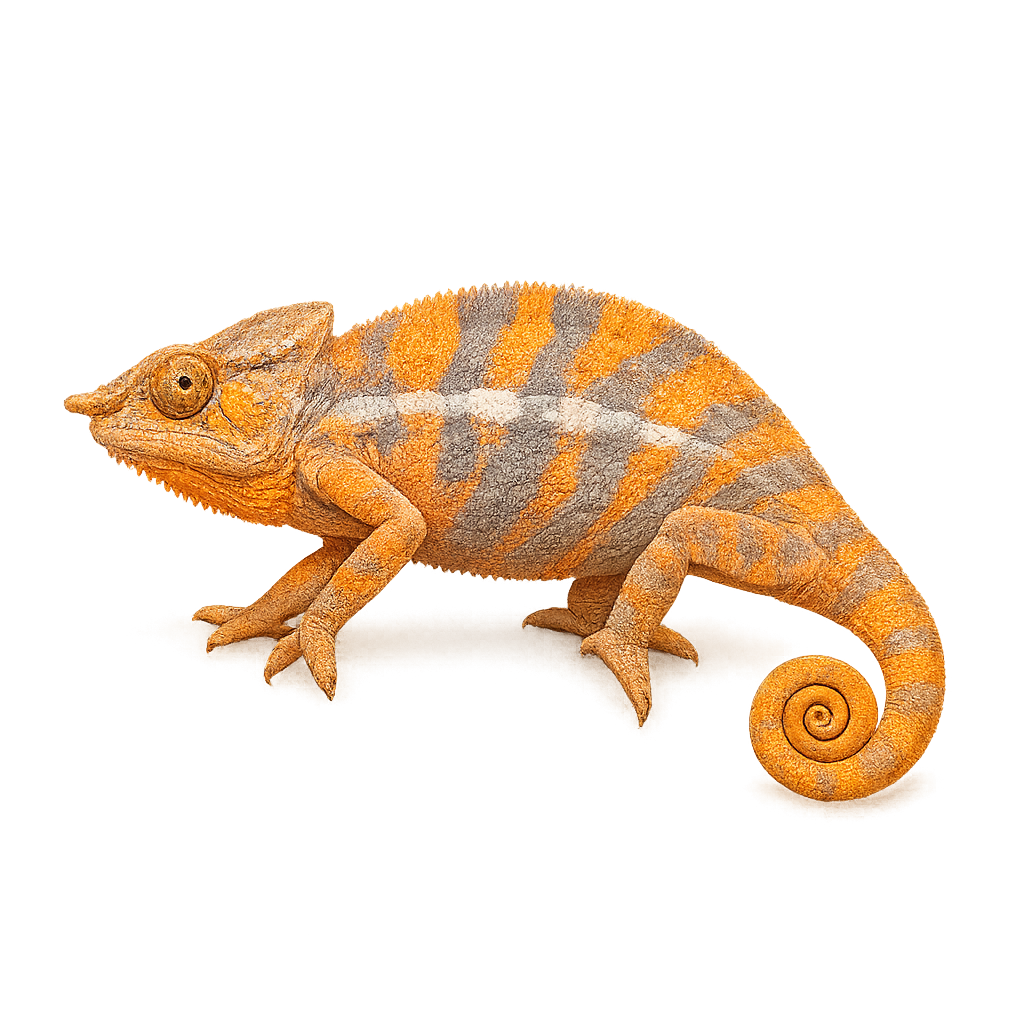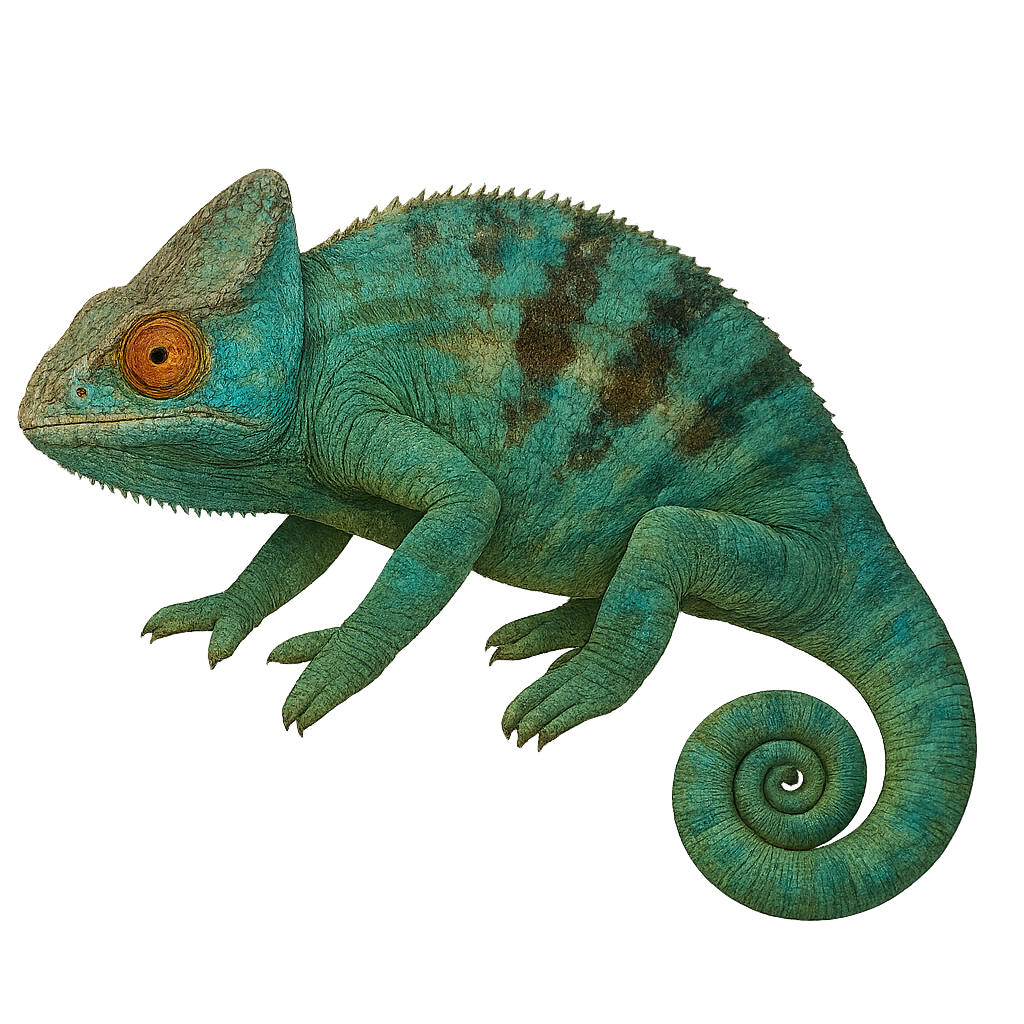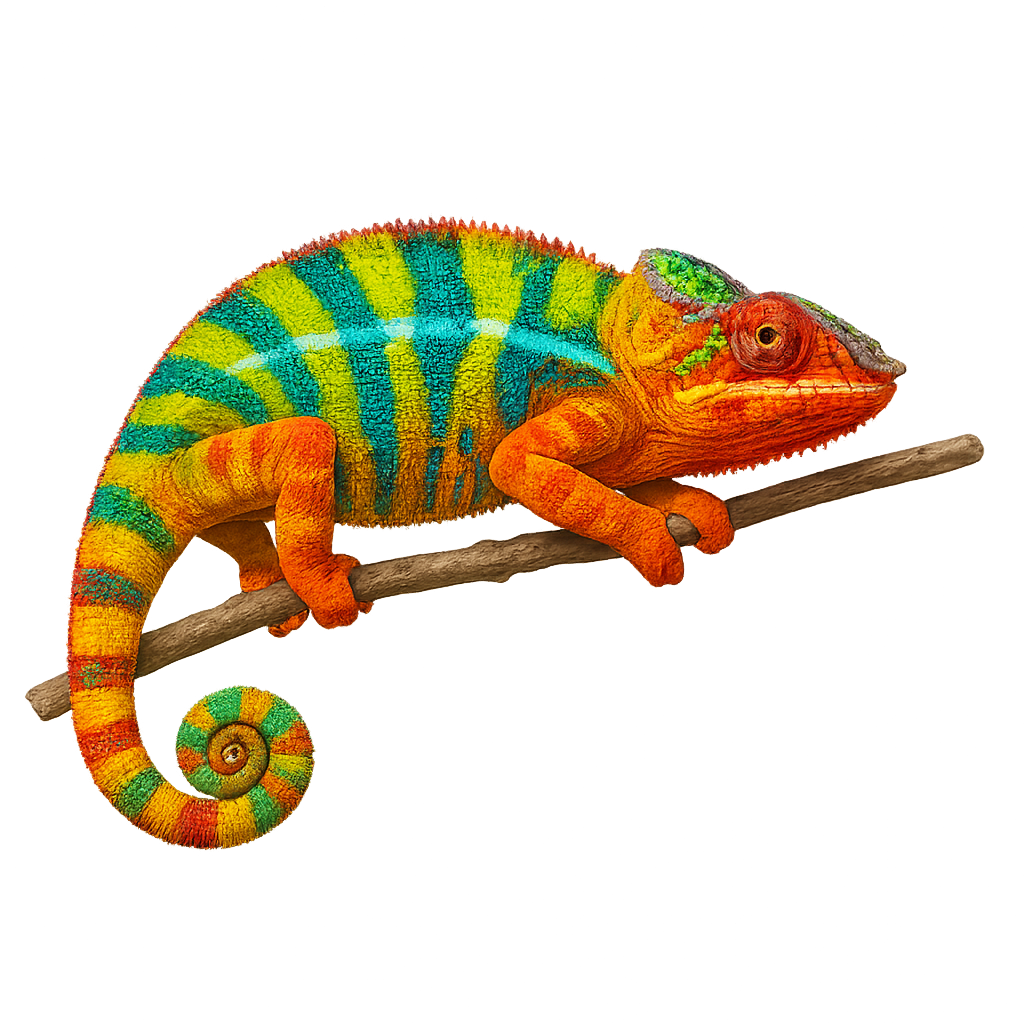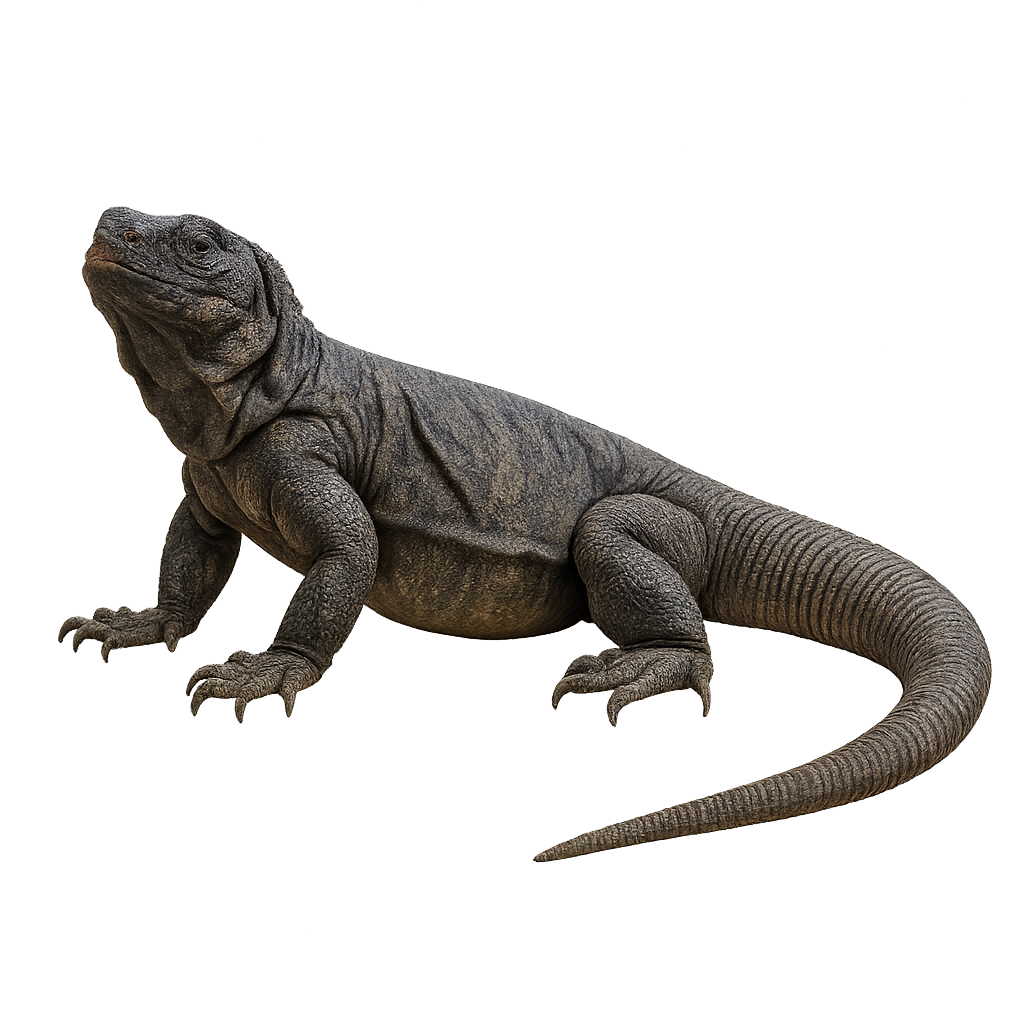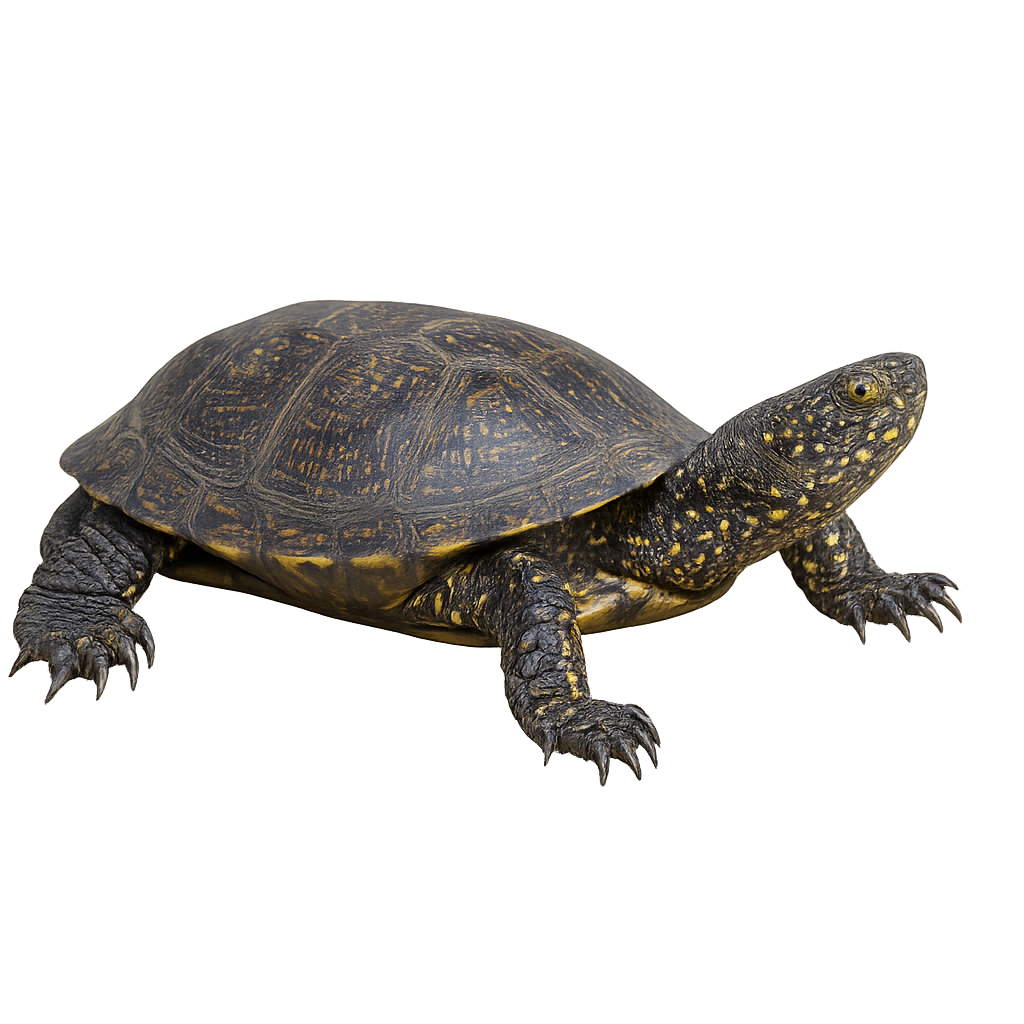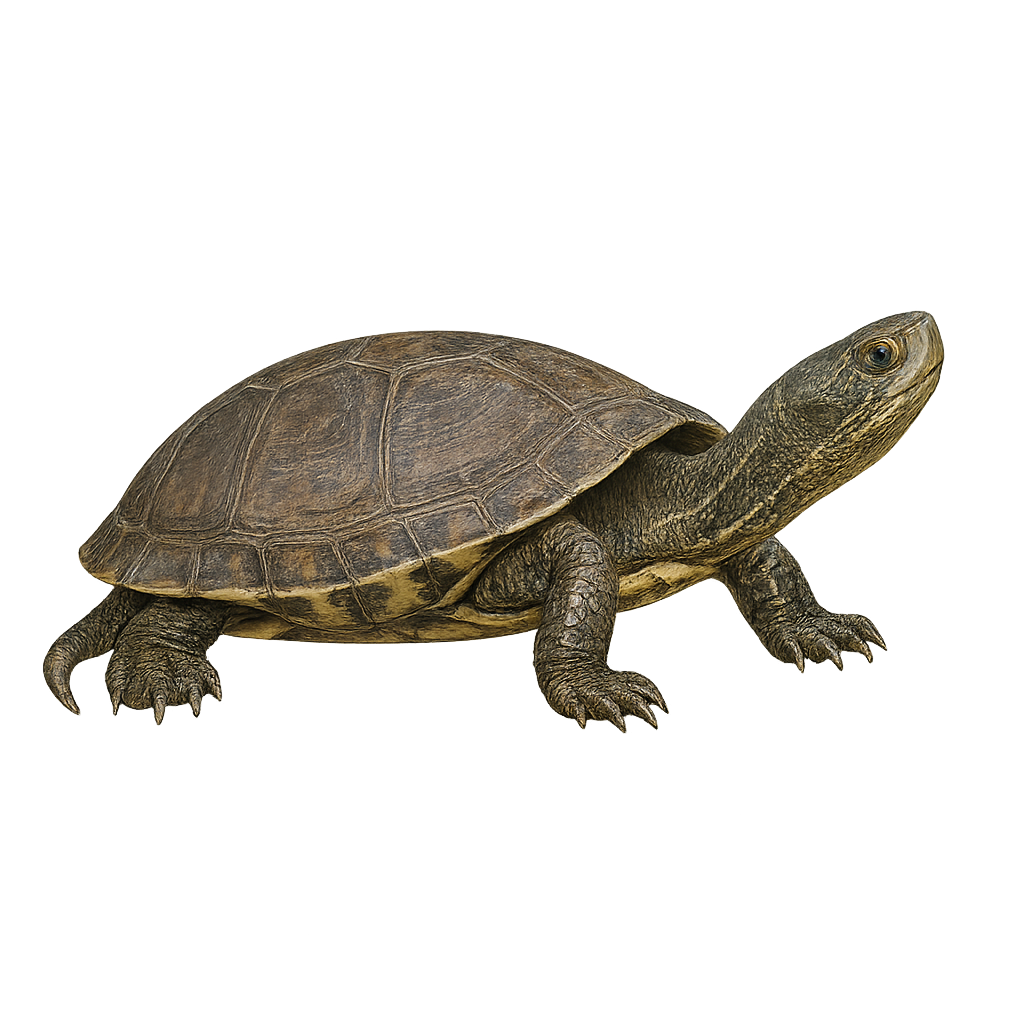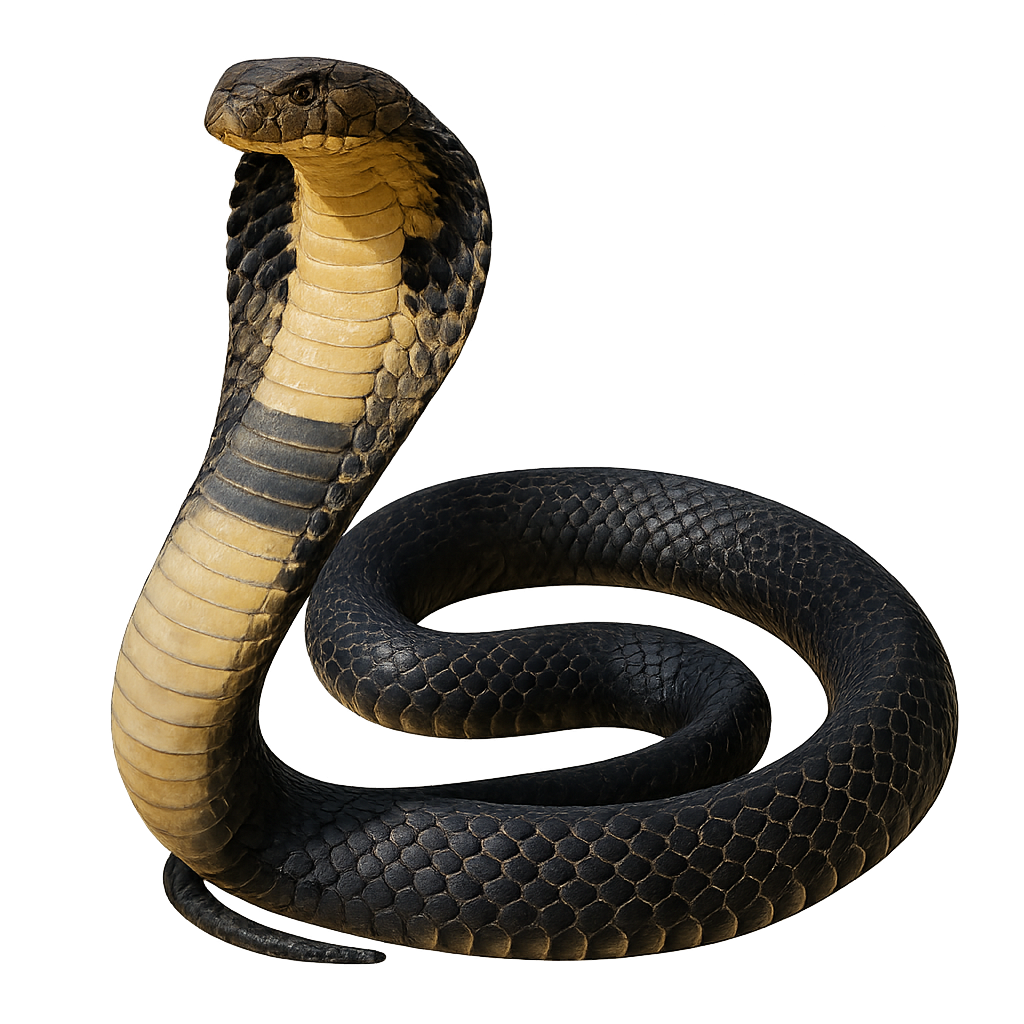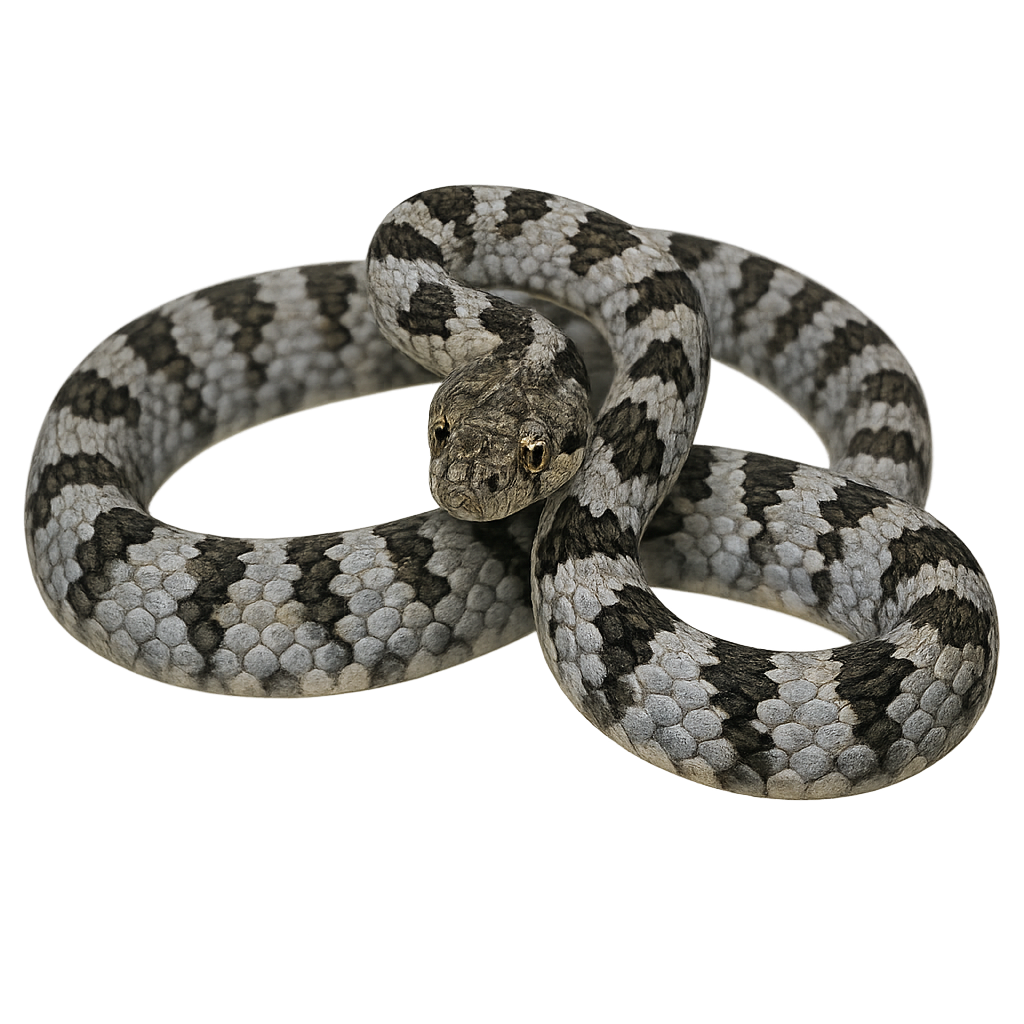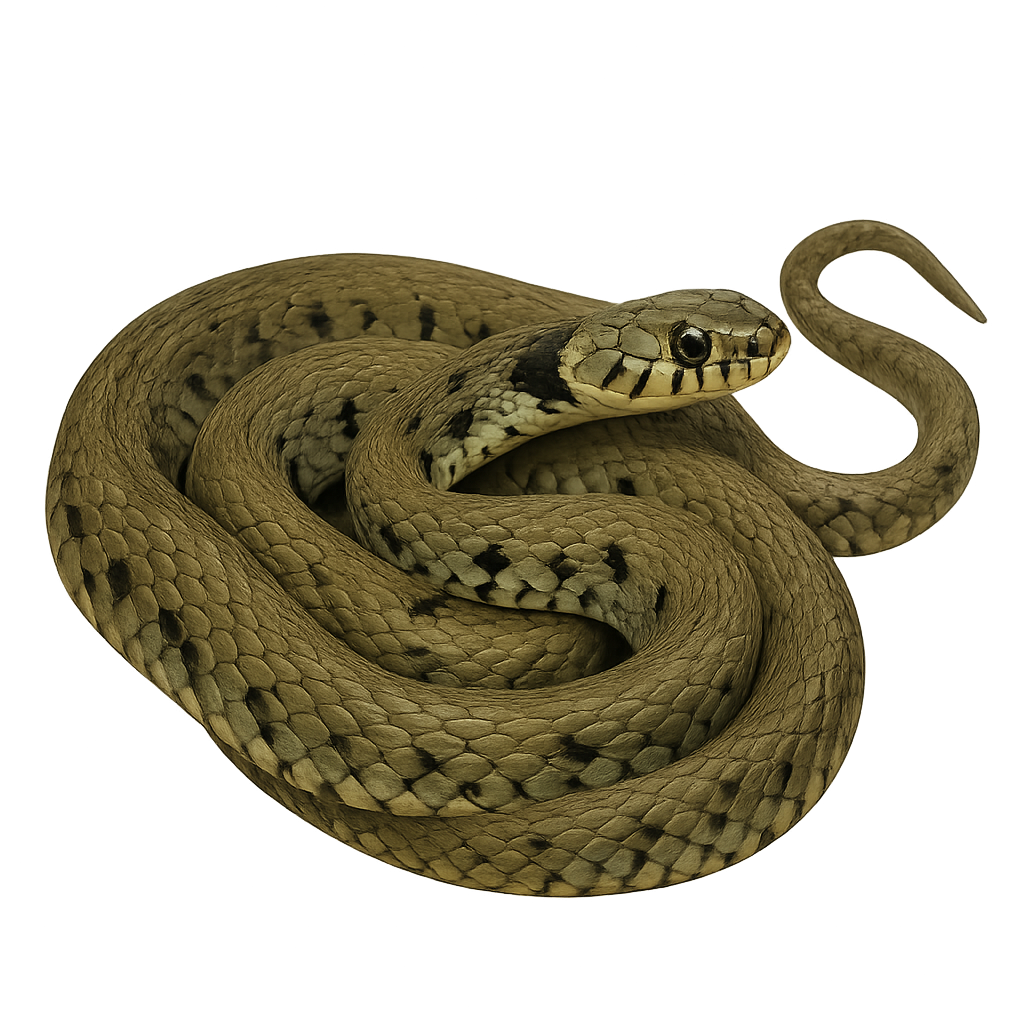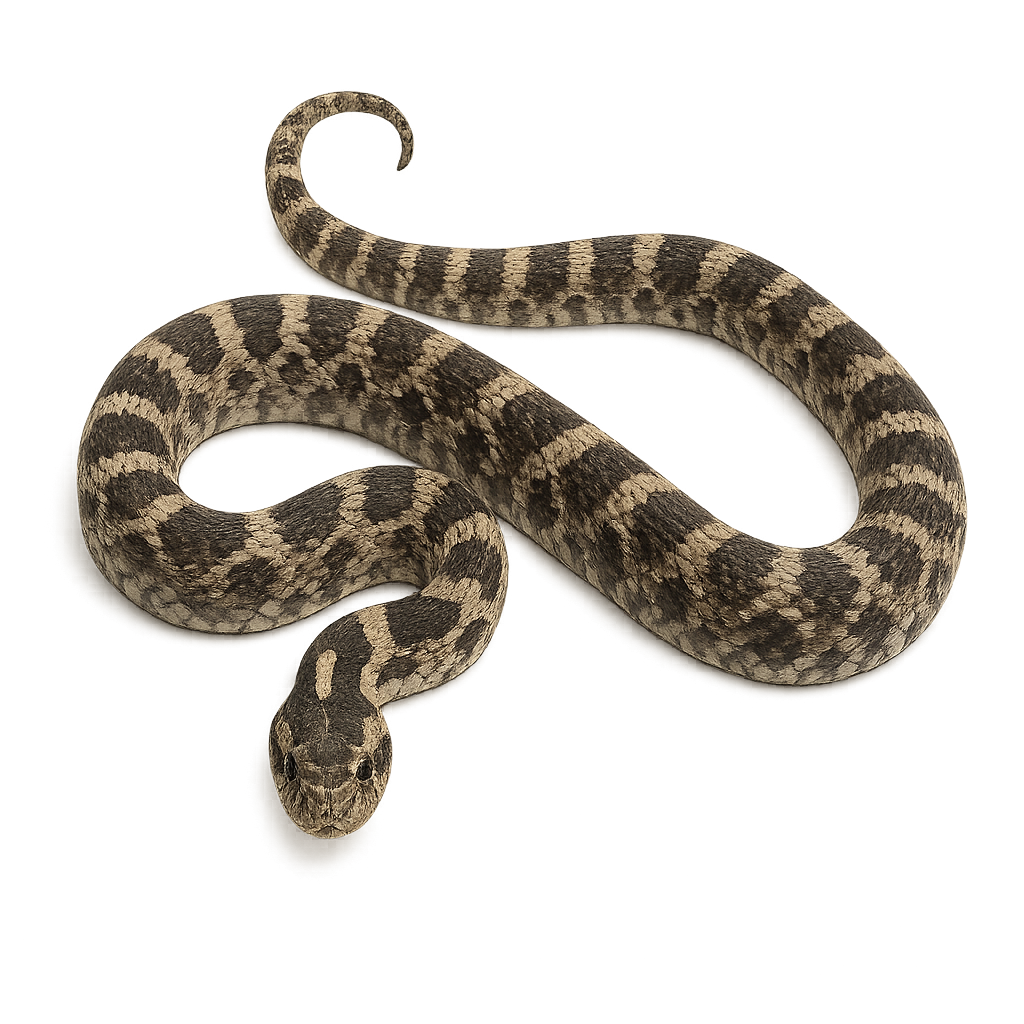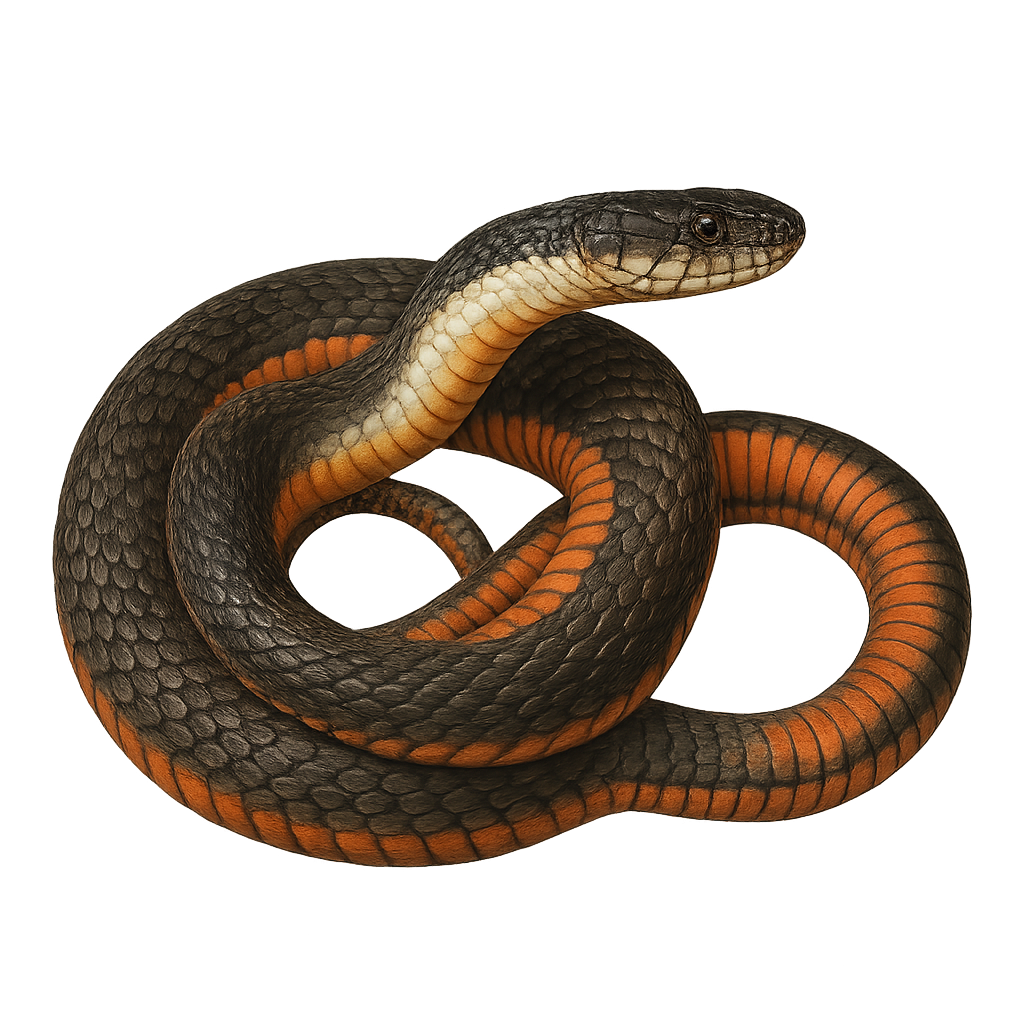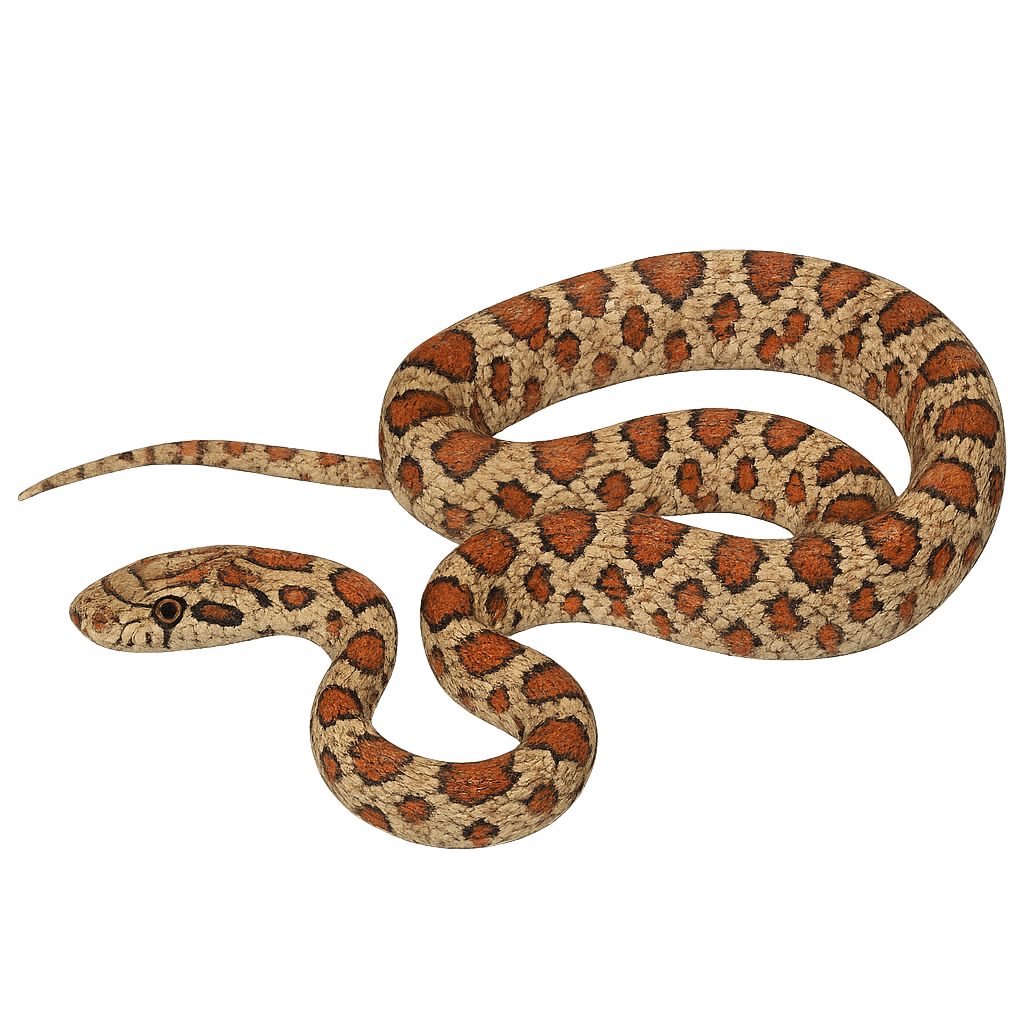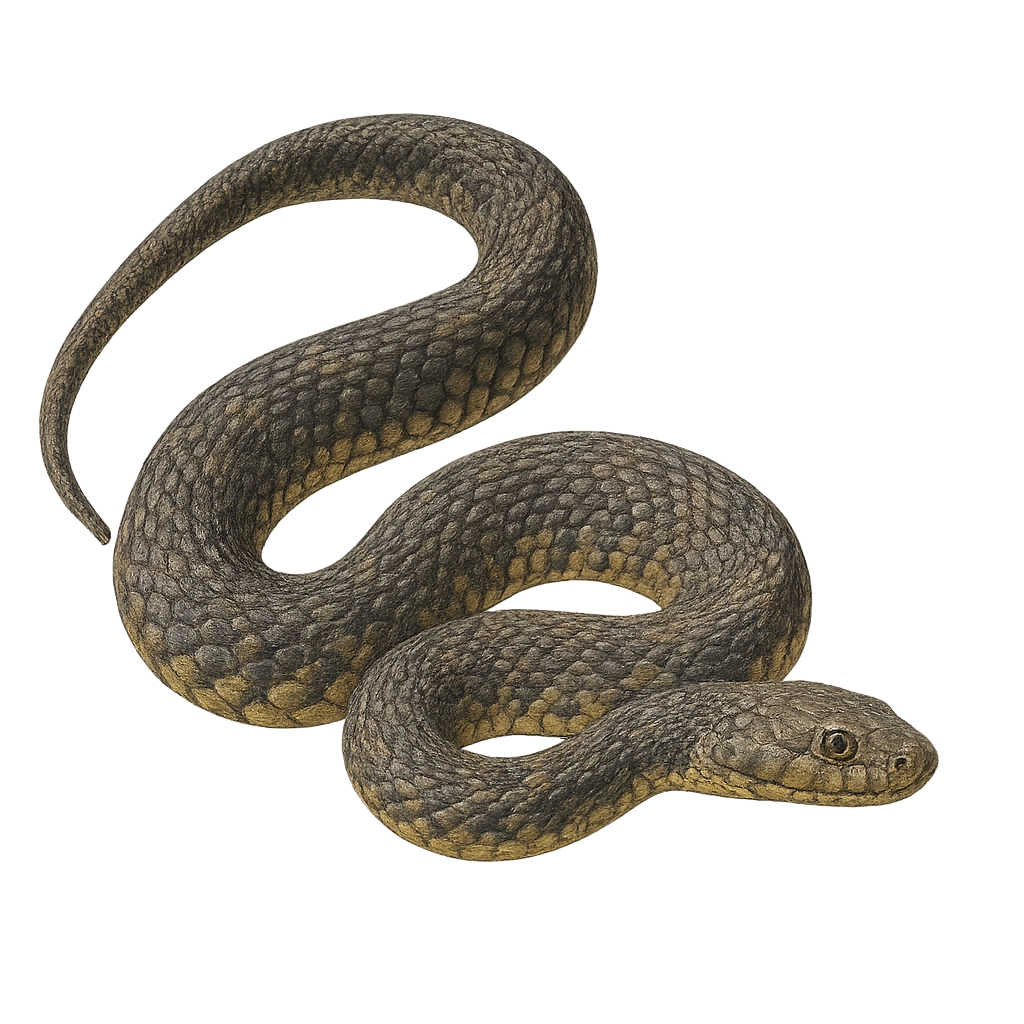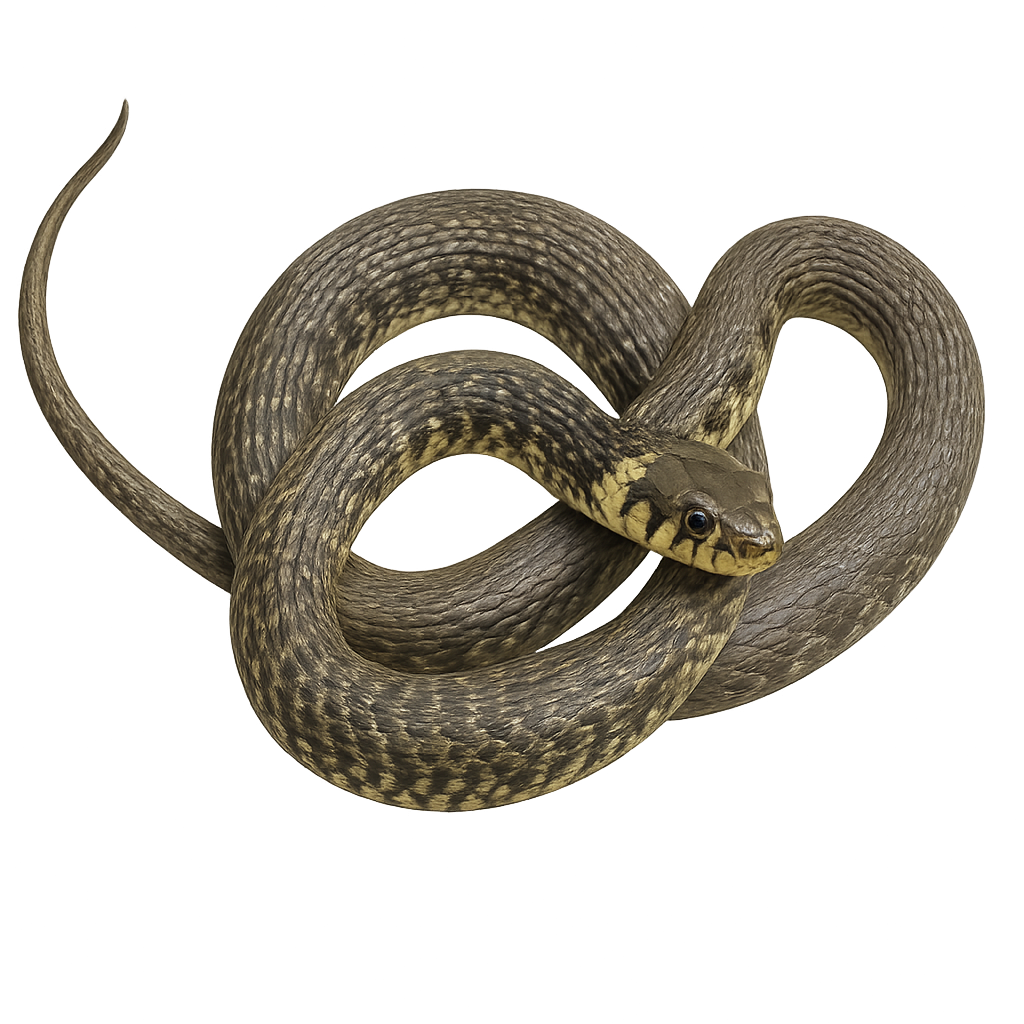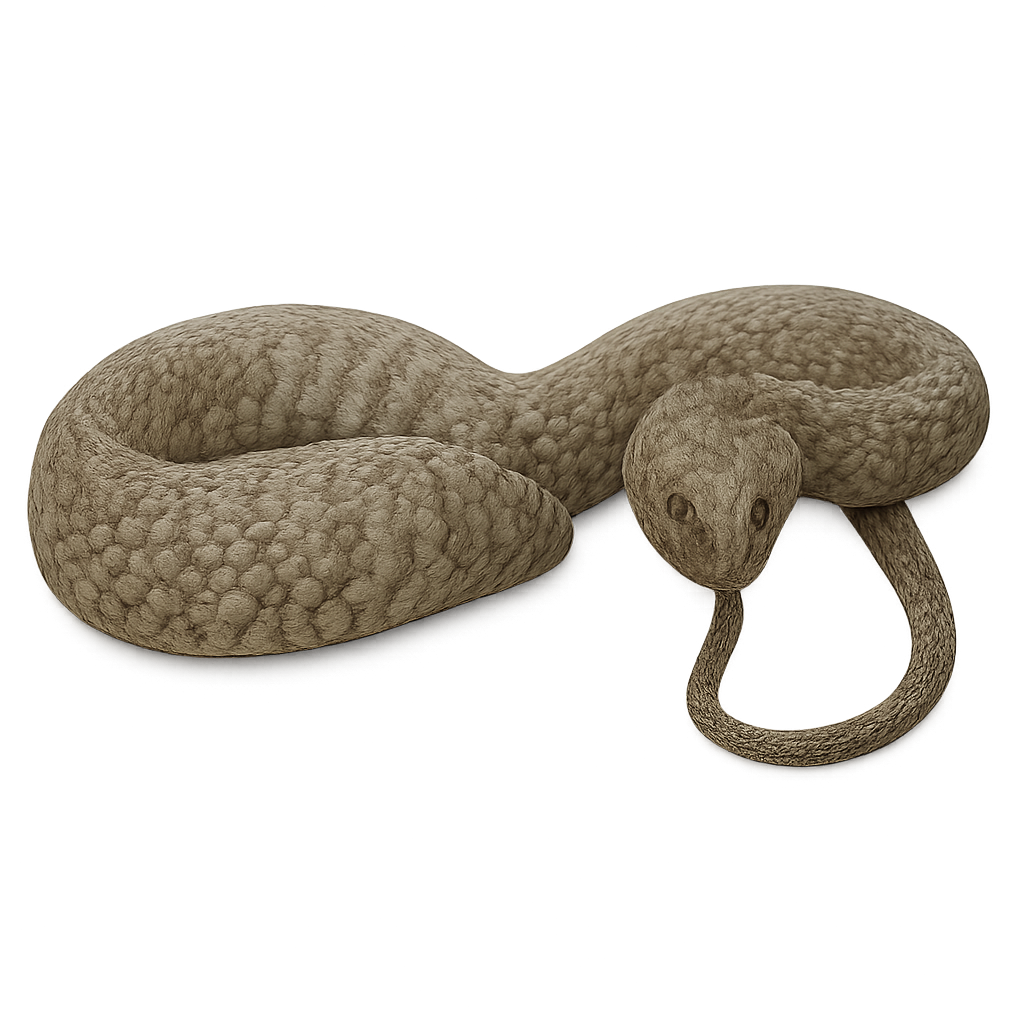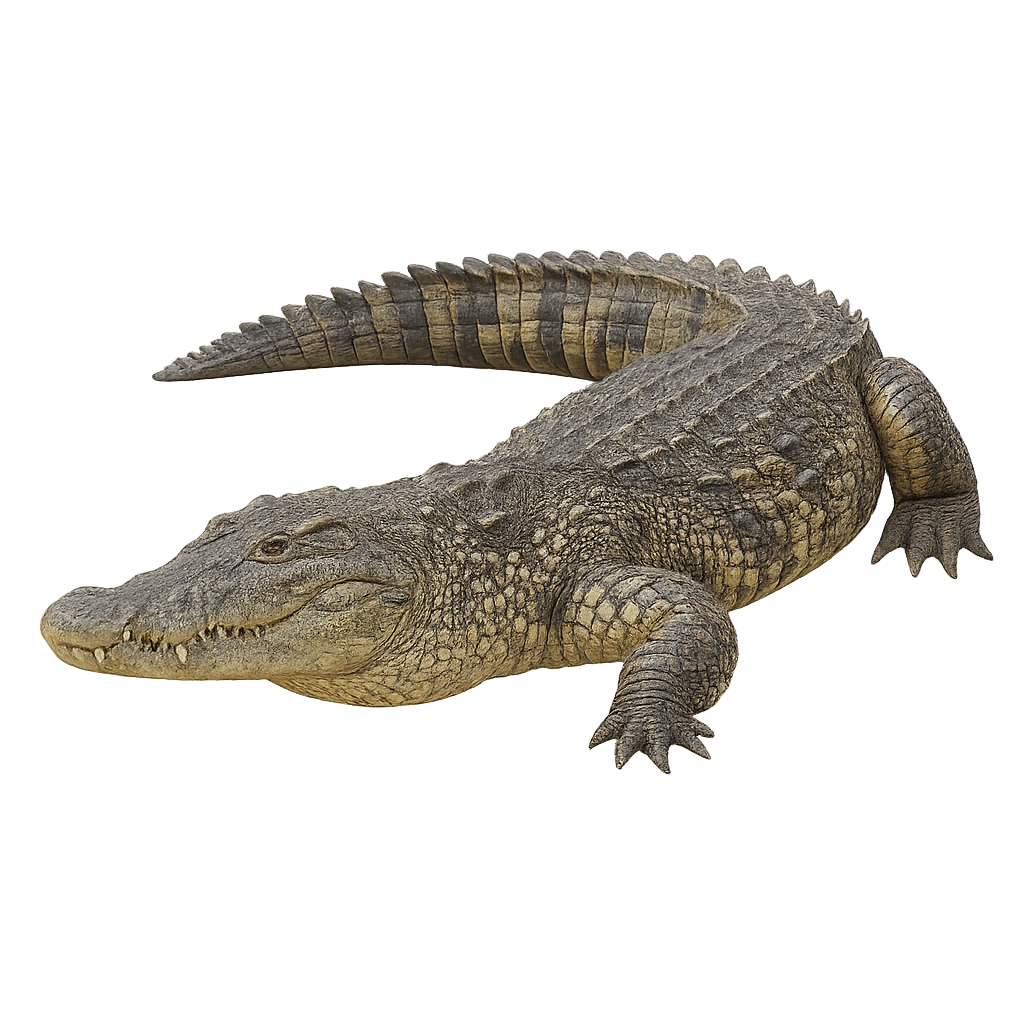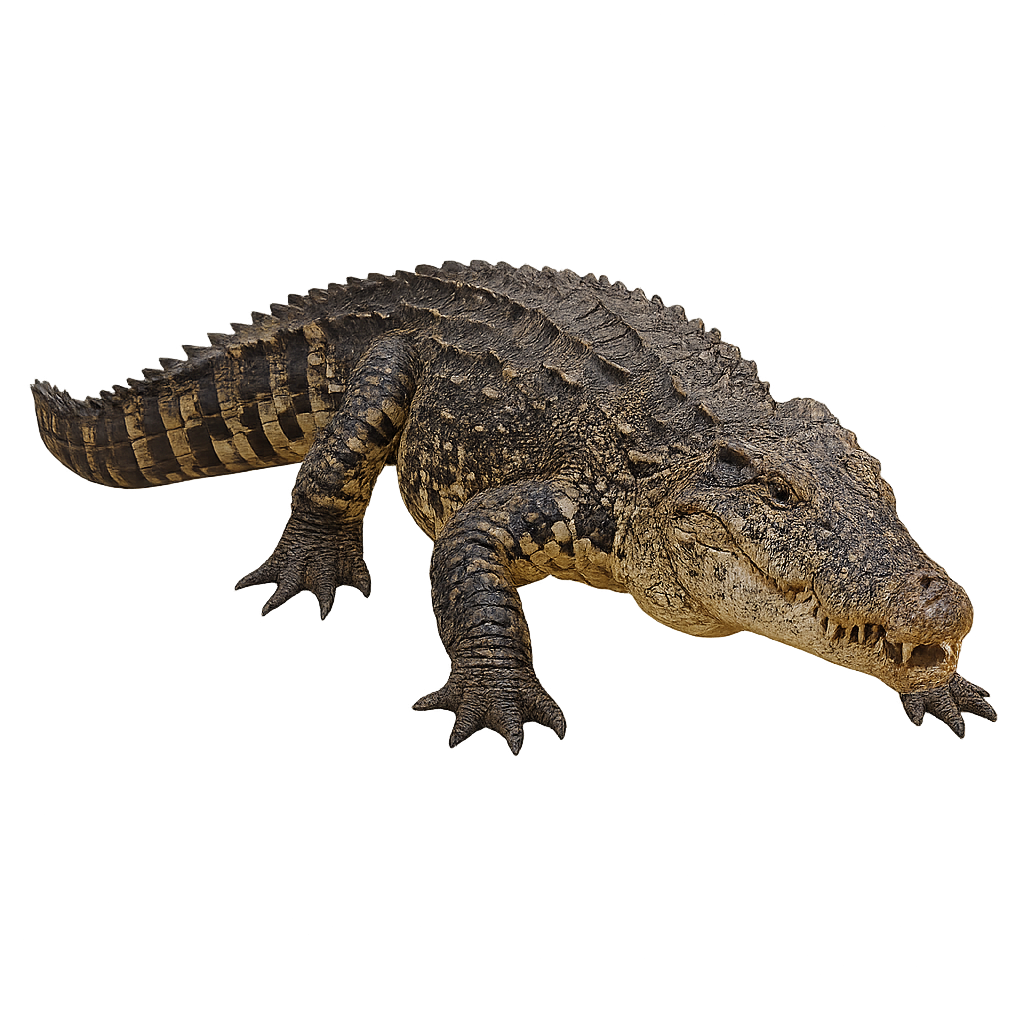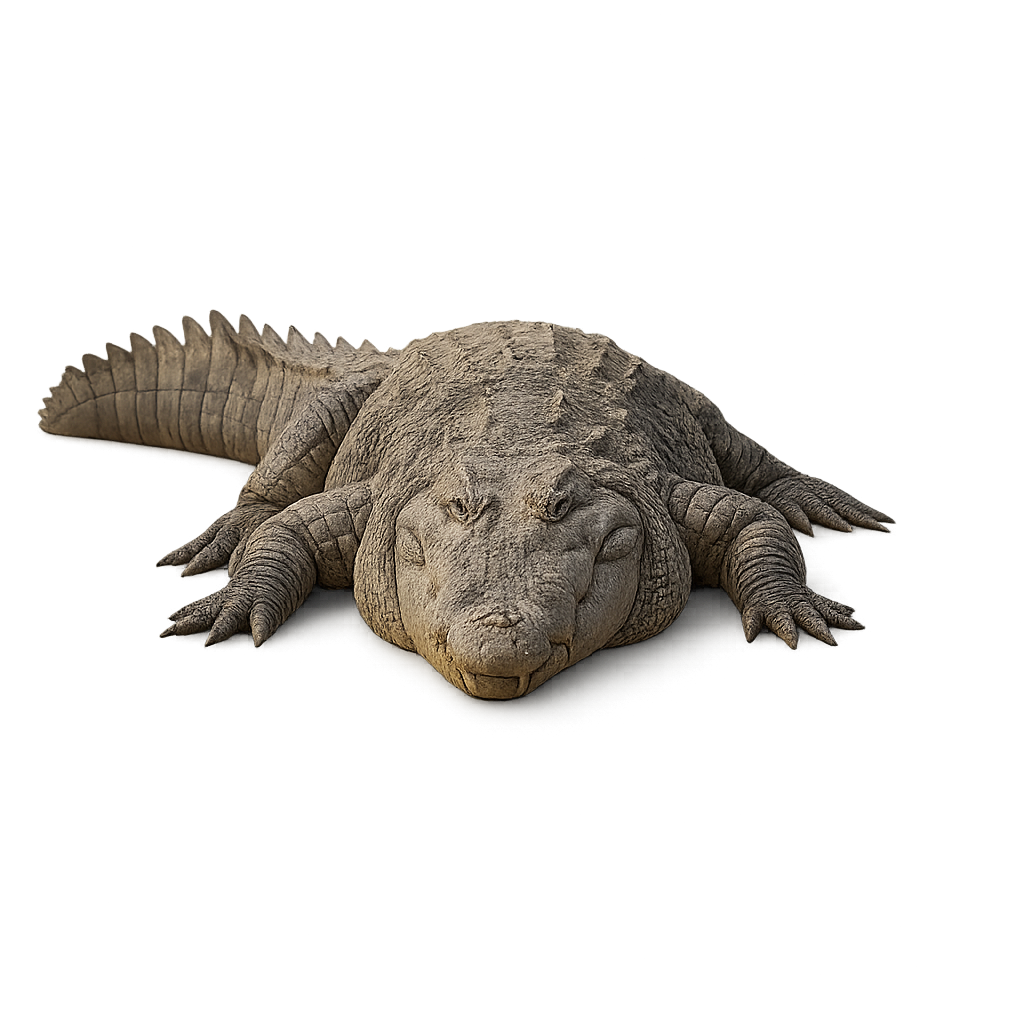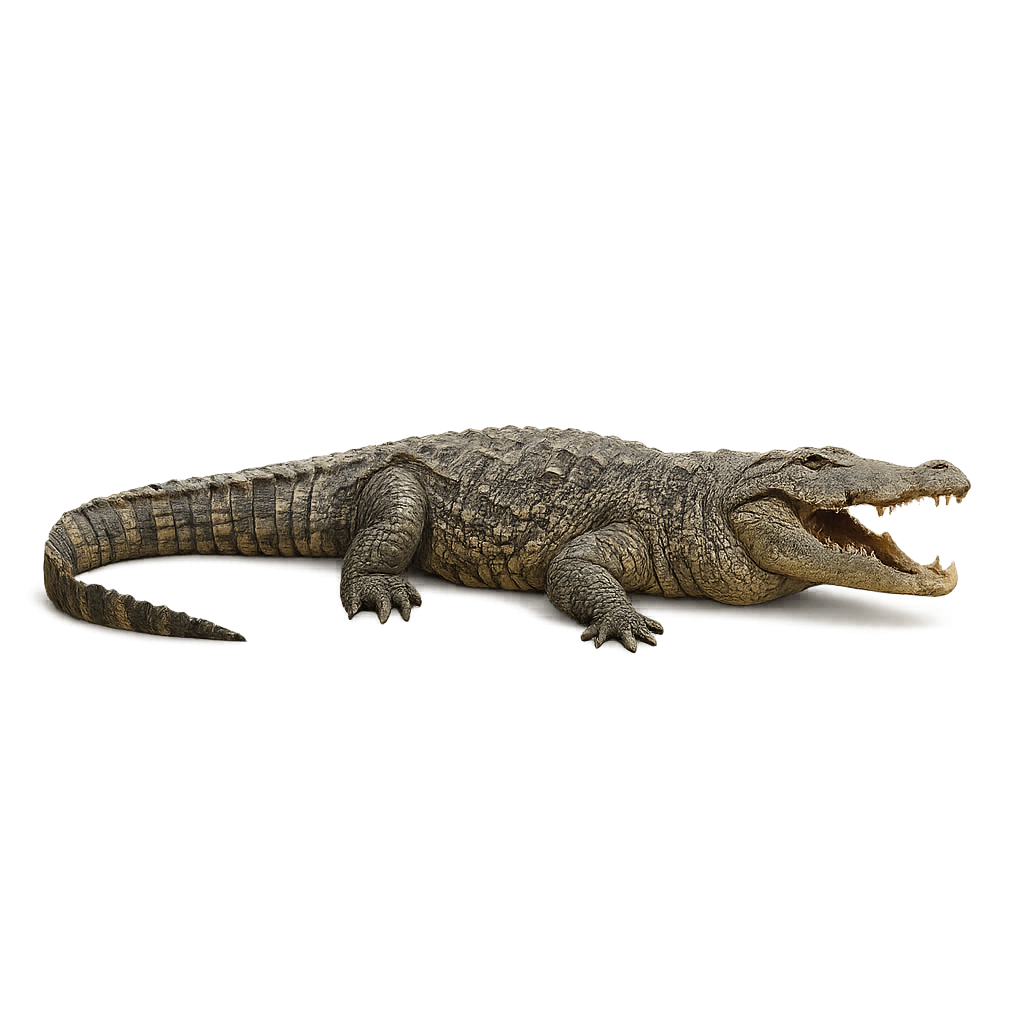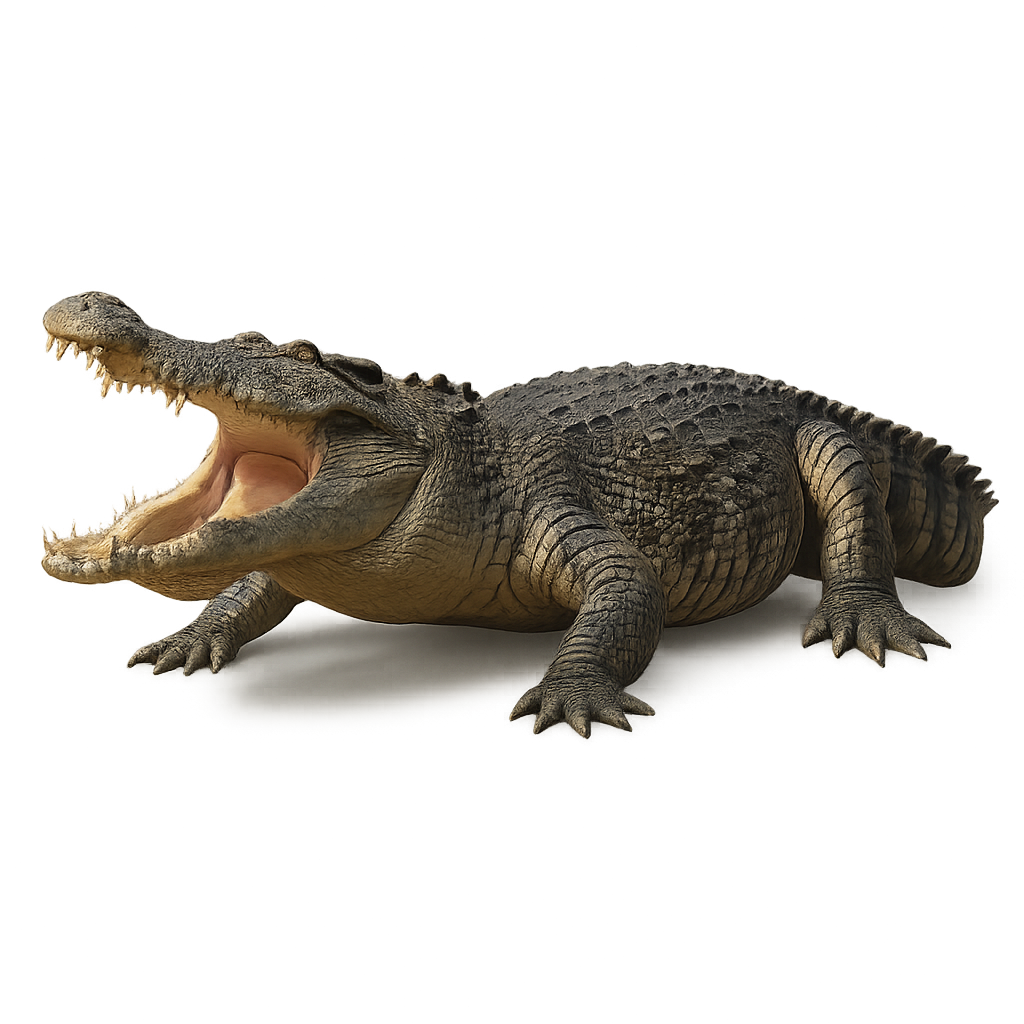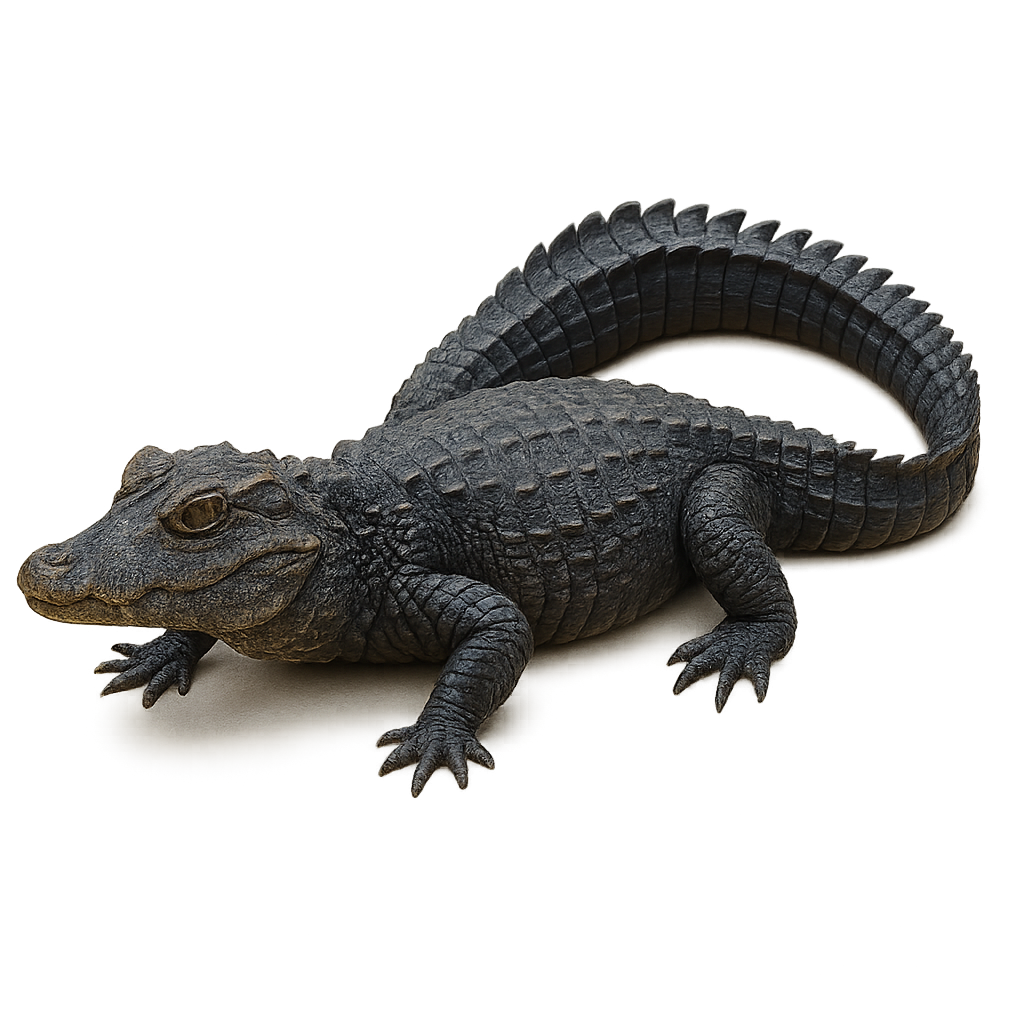The veiled chameleon is a medium-sized arboreal reptile (35–45 cm head–tail) with a bony cranial casque and zygodactylous feet. Native to the semi-arid regions of the Arabian Peninsula, it dwells in trees and shrubs feeding on insects and occasionally leaves. During the breeding season (March 1–June 30), the male displays bright colours and performs lateral casque-waving courtship rituals.
The common chameleon, Chamaeleo chamaeleon, is a fascinating reptile known for its ability to change color. Native to Mediterranean regions, it primarily inhabits forests, scrublands, and shrub areas. This chameleon is a master of camouflage, using its color-changing ability to blend into its surroundings and evade predators. It has an extremely long and fast tongue, which it uses to catch insects. Its vision is also remarkable, with eyes capable of moving independently, allowing it to monitor its environment in 360 degrees. Although primarily arboreal, it occasionally descends to the ground to move from tree to tree.
The Angel's Chameleon, Furcifer angeli, is a chameleon species endemic to Madagascar. This reptile displays vibrant colors, ranging from green to blue, with distinctive patterns that allow it to blend into its natural environment. It is primarily arboreal, living in the island's humid tropical forests. Its average size is about 20 to 25 cm, making it relatively small compared to other chameleon species. It mainly feeds on insects, which it captures with its extendable tongue. Habitat conservation is crucial, as deforestation threatens its survival. Although little studied, it is considered a vulnerable species.
The Labord's Chameleon, Furcifer labordi, is a chameleon species endemic to Madagascar. This reptile is particularly fascinating due to its extremely short life cycle, one of the shortest among vertebrates. Adults emerge after the rainy season, reproduce quickly, and then die, leaving their eggs to survive the dry season. This unique life cycle is an adaptation to Madagascar's climatic conditions. Males are often more colorful than females, displaying vibrant shades of green and blue. They primarily inhabit dry forests and shrub areas, skillfully camouflaging among leaves and branches.
The Parson's chameleon, or Calumma parsonii, is one of the largest chameleons in the world, native to Madagascar. It is renowned for its impressive size, sometimes reaching up to 70 cm in length. Its skin displays a range of colors from green to blue, occasionally with hints of yellow or orange, allowing it to blend into its forest environment. This chameleon is primarily arboreal, living in the island's humid forests. It is known for its extremely long tongue, which it uses to catch insects from a surprising distance. Although it is a solitary animal, it is relatively tolerant of human presence, making it a favored subject for naturalists.
The Panther Chameleon is an iconic species from Madagascar, famous for its vibrant colors and impressive patterns that vary depending on its mood and environment. This chameleon is primarily arboreal, living in the humid tropical forests of the island, where it hides among branches and foliage. It is also known for its ability to change color, an adaptation that helps it camouflage but is also used during fights between males or to attract a female. Although generally calm, it can become more active during the breeding season.
The Furcifer rhinoceratus, commonly known as the rhinoceros chameleon, is a chameleon species endemic to Madagascar. It is easily recognizable by its prominent nasal horn, which is more pronounced in males. This chameleon displays a green coloration with shades of blue and yellow, allowing it to blend into its forest environment. It primarily inhabits the island's dry and humid forests, where it feeds on insects. The rhinoceros chameleon is a diurnal animal, spending most of the day hunting and basking in the sun. Although it is relatively tolerant of human presence, it is important to respect its natural space to avoid disturbing it.
The Furcifer verrucosus, or warty chameleon, is a species of chameleon endemic to Madagascar. It is easily recognizable by its rough, warty skin, which gives it its name. This chameleon can reach a size of 23 to 25 cm, with a tail that represents about half of its total length. Its coloration varies from green to brown, with lighter or darker patterns depending on its mood or environment. It primarily inhabits the dry forests and shrublands of the island. Like most chameleons, it has independent eyes that allow it to scan its surroundings at 360 degrees. It mainly feeds on insects, which it captures with its extendable tongue.
The Spiny Chuckwalla, scientifically known as Sauromalus hispidus, is a large lizard endemic to San Esteban Island in the Gulf of California, Mexico. This reptile is recognized for its rough, spiny skin, which helps it blend into its rocky environment. It primarily feeds on vegetation, including flowers and leaves. Males are generally larger than females and display more vibrant colors. This lizard is well adapted to its arid habitat and can withstand long periods without water. It is often seen basking in the sun on rocks, which helps regulate its body temperature.
The European Pond Turtle is a medium-sized freshwater turtle, measuring between 12 and 20 cm in length. Its carapace is oval, slightly domed, dark brown to blackish, with yellow spots. The plastron is yellow with dark spots. The feet are webbed, adapted for swimming. This species inhabits stagnant or slow-flowing waters, such as ponds, marshes, and slow rivers, with dense aquatic vegetation. It is omnivorous, feeding on small aquatic invertebrates, fish, amphibians, and plant matter. Reproduction occurs in spring, with the female laying 8 to 10 eggs in loose, sunny soil. Incubation lasts about 80 to 110 days, with hatchlings emerging in late summer or the following spring. Listed as Near Threatened by the IUCN, the European Pond Turtle is protected in many European countries.
The Balkan Terrapin, Mauremys rivulata, is a medium-sized aquatic turtle, typically measuring between 15 and 20 cm in length. It is recognizable by its olive-brown shell, often adorned with lighter patterns. This species is primarily found in Mediterranean regions, including Greece, Turkey, and the Balkans. It prefers aquatic habitats such as rivers, lakes, and marshes. The Balkan Terrapin is an omnivorous species, feeding on aquatic plants, insects, and small fish. Although it is relatively tolerant of human presence, it is threatened by habitat destruction and pollution.
The king cobra is a large venomous snake in the family Elapidae, reaching 3–4 m in length, with olive-brown body and a lighter dorsal hood. It inhabits tropical forests, mangroves and wetlands, feeding mainly on other snakes, small mammals and birds. During breeding season, males engage in ritual combat and females build a leaf nest to lay 21–40 eggs.
The Telescopus fallax, commonly known as the European Cat Snake, is a medium-sized snake, typically measuring between 70 and 100 cm in length. Its coloration ranges from gray to brown, often adorned with dark saddle-shaped patterns. This snake is primarily nocturnal and feeds on small vertebrates, including lizards and rodents. It has rear-fanged venomous teeth, but its venom is harmless to humans. Found in Mediterranean regions, it prefers rocky and dry habitats. Although discreet, it can be observed during its nocturnal outings.
The European Water Snake is a non-venomous species of snake, easily recognized by the distinct black or brown collar-like markings around its neck. Its body is typically olive or brown, with lighter patterns on the back and sides. This snake typically measures between 50 and 100 cm long, although it can sometimes reach up to 1.5 meters in rare cases.
The European Water Snake primarily inhabits wetland areas, such as lake shores, rivers, and marshes. It is highly agile and spends most of its time hunting fish, amphibians, and small reptiles, which it captures by diving or swimming. Though mainly terrestrial, it is also an excellent swimmer. The species is protected in some areas due to habitat loss. The European Water Snake plays an important role in regulating amphibian populations and controlling small aquatic animals.
The Common European Water Snake is a non-venomous snake species, easily recognized by the distinctive black patch that forms a collar around its neck. It is typically olive green to gray in color, with lighter patterns on the belly and small black spots on the back. It can grow up to 1.5 meters in length, although the average size is around 1 meter.
This snake primarily inhabits wetland areas, such as lake shores, marshes, and rivers, where it primarily hunts fish, amphibians, and small reptiles. It is a very good swimmer and spends much of its time in the water, using its diving skills to capture prey. While it is fairly common, it may be threatened by the destruction of its natural habitats, pollution, and illegal collection. The Common European Water Snake is protected in several regions of its range.
The four-lined snake, Elaphe quatuorlineata, is a non-venomous snake primarily found in southern Europe. It is recognizable by its four dark stripes running along its yellowish-brown body. Typically measuring between 100 and 200 cm, it is one of the largest snake species in Europe. It prefers dry, rocky habitats, open woodlands, and agricultural areas. Although terrestrial, it is also a good climber. It mainly feeds on small mammals, birds, and eggs. Its behavior is generally calm, but it can become defensive if threatened.
The Nerodia erythrogaster, commonly known as the plain-bellied water snake, is a non-venomous aquatic snake found primarily in the southeastern United States. It is recognizable by its reddish or orange belly, contrasting with its typically brown or dark gray back. Measuring between 60 and 120 cm in length, it is often seen near freshwater bodies such as marshes, rivers, and lakes. Although primarily aquatic, it can also be found on land, especially when basking in the sun. It primarily feeds on fish and amphibians. Its breeding season occurs in spring, and it gives birth to live young, usually between July and September.
The Aesculapian Snake is a non-venomous, long and slender snake that can reach up to 2 meters in length. Its coloration ranges from olive green to brown, with smooth scales and a metallic sheen. It inhabits temperate forests, hedgerows, fallow lands, and rocky areas, often near human settlements. It is diurnal and arboreal, primarily feeding on small mammals, birds, lizards, and eggs. Reproduction occurs in spring, with 2 to 18 eggs laid and incubated for 6 to 10 weeks. Protected species in Europe, it is listed as Least Concern by the IUCN.
The Leopard Snake, Zamenis situla, is a non-venomous snake known for its distinctive color pattern, featuring reddish-brown spots bordered with black on a gray or beige background. It is mainly found in southern Europe, particularly in Italy, Greece, and the Balkans. This snake prefers dry, rocky habitats, often near cultivated areas. Typically measuring between 60 and 90 cm, it is agile and feeds primarily on small mammals and birds. Although discreet and somewhat suspicious, it is not aggressive towards humans. Its conservation is concerning due to habitat loss and human persecution.
The dice snake, Natrix tessellata, is a medium-sized semi-aquatic snake, typically measuring between 70 and 100 cm. It has a slender body with a distinctive checkerboard pattern on its back, consisting of dark spots on a lighter background. Its coloration ranges from gray to brown, sometimes with greenish hues. It is often found near freshwater bodies, such as rivers and lakes, where it primarily feeds on fish and amphibians. Although non-venomous and harmless to humans, it can emit an unpleasant odor when threatened.
The Western Whip Snake is a slender snake that can reach up to 1.60 m in length. Its coloration is dark, black or dark green, speckled with yellow spots forming transverse bars at the front of the body and longitudinal lines towards the rear. The belly is light, yellow or greenish-white. Juveniles have a more uniform grayish to beige hue with distinctive head patterns. It inhabits dry and sunny environments, such as hedgerows, fallow lands, forest edges, and rocky areas, from plains up to 1900 m altitude. Diurnal and agile, it primarily feeds on small vertebrates: rodents, lizards, amphibians, and sometimes other snakes. Reproduction occurs in spring, with 5 to 15 eggs laid in June-July, incubated for 6 to 8 weeks. Protected species in Europe, it is vulnerable to habitat destruction and road traffic.
The Viperine snake is a non-venomous semi-aquatic snake, typically measuring between 50 and 90 cm, with a distinct head and round pupils. Its back features a dark zigzag pattern on a gray, brown, or greenish background, and its belly is yellow or reddish with black spots. It inhabits humid environments such as rivers, ponds, and lakes, where it primarily hunts fish, amphibians, and tadpoles. Reproduction occurs in spring, with 2 to 26 eggs laid in loose soil. This species is protected in Europe and is listed as Least Concern by the IUCN.
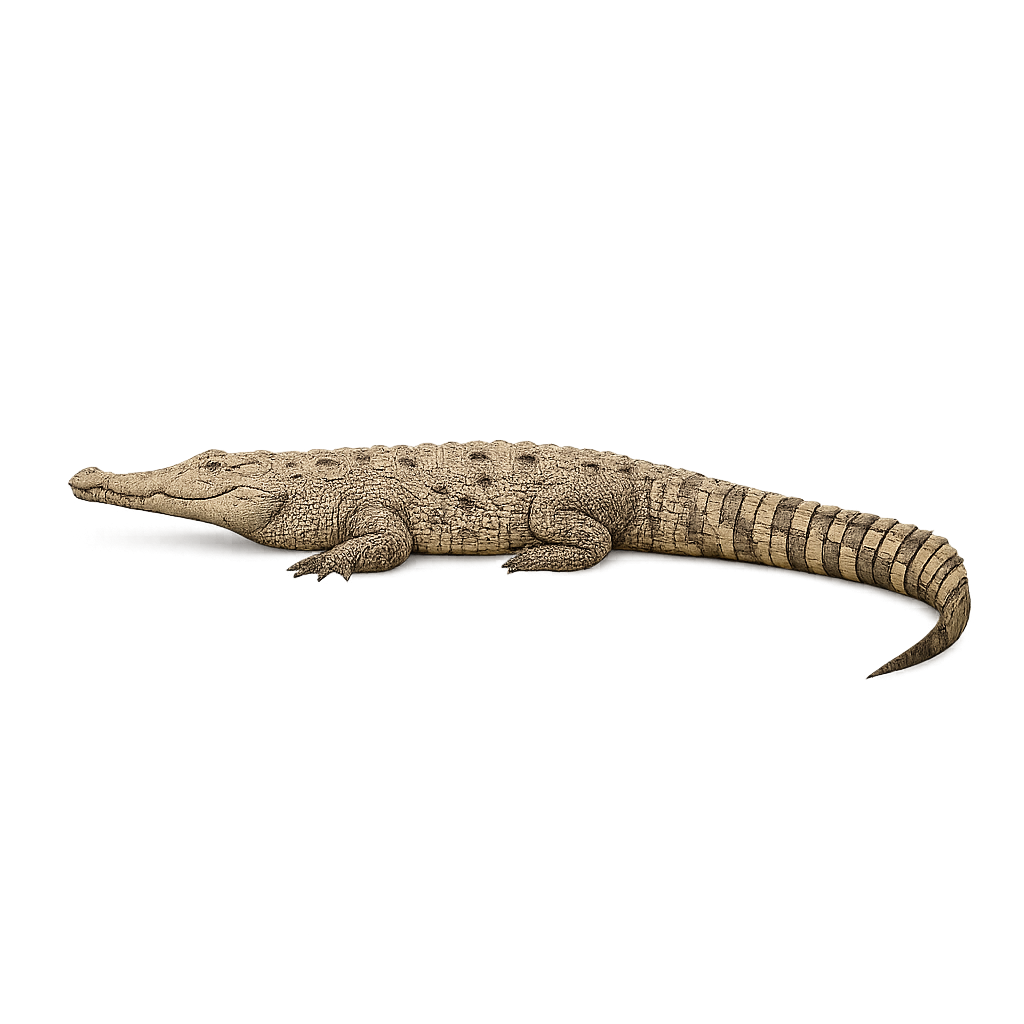
The American Crocodile, also known by the scientific name Crocodylus acutus, is a large reptile distinguished by its impressive size and broad distribution. It can reach lengths of 6 to 7 meters, although some individuals can exceed this size. Its body is covered with green to gray scales, often speckled with darker patches, which help it blend perfectly into the brackish waters and marshlands of its habitats. The American crocodile primarily lives in coastal and estuarine areas, where it feeds on fish, birds, and small mammals. It is an opportunistic hunter and can occasionally capture large prey when they venture too close to the water. This reptile is semi-aquatic and spends a significant amount of time in the water, but it is also capable of moving on land. Regarding migration, the American crocodile is relatively sedentary, although it can travel long distances along the coast depending on environmental conditions. It is listed as vulnerable due to habitat loss and intensive hunting for its skin. Potential Threats: habitat loss due to coastal development and water pollution, illegal hunting for its skin and meat.
The Morelet's crocodile is a large aquatic reptile in the family Crocodylidae, measuring 2–3 m in length, with a robust body, greenish-brown scaly skin and a broad head. It inhabits coastal lakes, rivers, swamps and freshwater lagoons, occasionally brackish waters, feeding mainly on fish, birds and small mammals. During nesting, the female builds a mound of vegetation debris on the shore and lays 20–45 eggs, which she guards for about 80 days.
The Cuban crocodile, Crocodylus rhombifer, is a medium-sized species endemic to Cuba, primarily found in the Zapata Swamp and the Isle of Youth. It typically measures between 2 and 3.5 meters in length and is known for its distinctive scaly skin with vibrant colors ranging from olive green to yellow, with black patterns. This opportunistic predator feeds mainly on fish, small mammals, and birds. It is recognized for its aggressive and territorial behavior, making it potentially dangerous to humans. Unfortunately, this species is critically endangered due to habitat loss and illegal hunting.
The Orinoco crocodile is a large aquatic reptile in the family Crocodylidae, measuring 3–4 m in length, with olive-green scaly skin and a heavy head. It inhabits rivers, lakes and swamps of the Orinoco basin, feeding mainly on fish, turtles and small mammals. During nesting, the female builds a vegetation mound on the riverbank and lays 30–40 eggs, guarding them for about 80 days.
The Marsh Crocodile, also known by the scientific name Crocodylus palustris, is a medium-sized reptile that can reach about 4 to 5 meters in length. Its body is typically olive to brown, with darker patterns that allow it to effectively blend into the swamps, rivers, and lakes of its habitat. This crocodile is primarily carnivorous and feeds on fish, birds, and small mammals, but it can also hunt larger animals when they venture too close to the water. The Marsh Crocodile is known for its patience and discretion when hunting, often remaining still for hours before seizing its prey. In terms of distribution, it is found in the Indian subcontinent, particularly in India, Pakistan, Bangladesh, and Sri Lanka. Although primarily sedentary, it can move short distances in search of new habitats. This species is listed as vulnerable due to habitat loss and hunting for its skin. Major threats include the draining of swamps, water pollution, and conflicts with human communities.
The Nile Crocodile is one of the most formidable and largest species of crocodiles, capable of reaching up to 5 meters in length. It primarily lives in rivers, lakes, and swamps in Africa and is an opportunistic predator, mainly hunting fish, birds, and mammals that approach the shores. This crocodile is also known for its territorial behavior, with males often dominating large aquatic areas. Its powerful body and rough skin allow it to blend into its environment, facilitating its stealthy hunting strategy. While primarily aquatic, the Nile Crocodile sometimes ventures onto land to bask in the sun.
The Saltwater crocodile is the largest of the crocodiles, reaching up to 7 meters in length. It lives in the saline and brackish waters of the coasts of Southeast Asia, northern Australia, and the islands of the Indian Ocean. A powerful predator, it primarily feeds on fish, birds, and mammals, including large prey such as buffaloes and even sharks. While it is often feared for its size and power, it remains discreet in shallow waters and mangrove swamps. Due to hunting and habitat loss, the Saltwater crocodile is classified as a vulnerable species.
The African dwarf crocodile is a small semi-aquatic crocodilian, measuring 1–1.5 m in length, with a robust body, broad head, and dark brown and black mottled skin. It inhabits forest swamps, slow-moving tributaries, and wetlands of West and Central Africa, feeding primarily on fish, crustaceans, and aquatic invertebrates. Solitary and crepuscular, it shelters in burrows or under tree roots.


